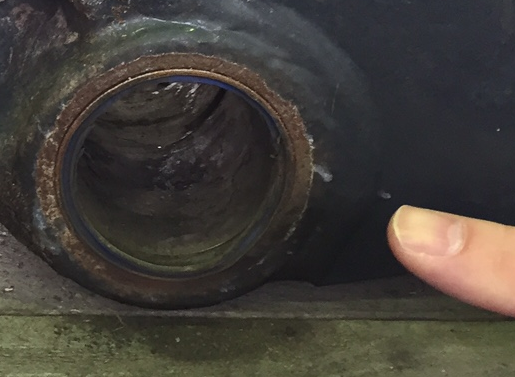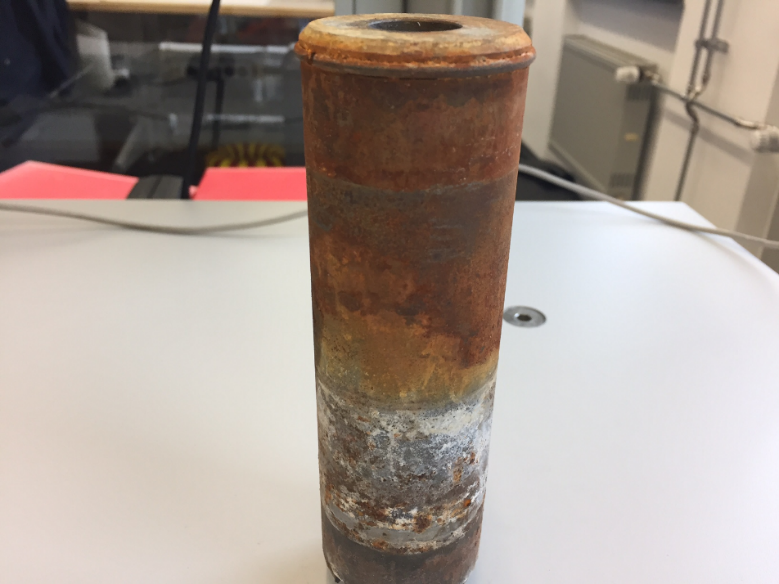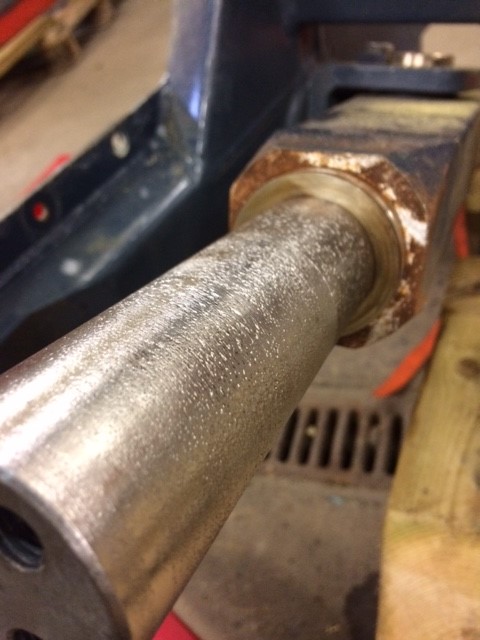Shaft corrosion can cause bearing wear – that is not immediately obvious
Yvan Cao | November 4, 2020
Case study
There is little doubt that a shaft damaged by corrosion has a negative effect on the bearing point.
It is especially obvious that the shaft is damaged when the corrosion is easy to see – and the surface apparently has already disappeared.
But appearances can be deceiving.
And that leads to a search for wear problems in the wrong place. Not much chance for success when that happens.
In this case, there is a complaint that there is too much abrasion dust in the bearing. The plastic bearing is being used in an application that involves heavy, slowly pivoting loads (>30 MPa). It is an outdoor application, so it is subjected to moisture and dirt … all the usual challenges associated with agricultural applications.
A query as to whether the shaft has corrosion protection returns a negative answer. But the answerer hastens to add that no corrosion or corrosion damage can be detected on the shaft.
An on-site inspection reveals the following:

The shaft is made of 42CrMo4 without any additional corrosion protection – but also without any discernible corrosion.
An initial inspection indicates that the shaft is not the cause of all the abrasion dust in the bearing.
A lip seal has even been added to this application, keeping at least part of the dirt away from the bearing point.

A plastic bearing with a lip seal after several months in tough outdoor conditions, unlubricated.
If nothing is getting in from the outside and the shaft is not corroded, the abrasion dust must come from the bearing, right?
This appears obvious, but then the colour of the abrasion dust should at least be similar to that of the bearing material.
But it isn’t – the abrasion dust is rust-brown.

As much of it as possible is scraped out of the bearing, collected and burned.
After four hours at 650°, all organic components (including plastic) are burned, but the sample’s weight is still 75% of the starting weight and is very magnetic.
So there is scarcely any abrasion dust from the bearing, but the shaft is clearly not corroded. Then where does the dust come from?
Since it is not realistic to have a salt spray test at short notice, the shaft is wrapped in a cloth moistened with salt water and laid aside for a few days. The shaft is then completely rusted!

Results of the improvised salt spray testing
I think that this is what happened:
A thin layer of corrosion forms on the shaft surface. When the machine is next used, it is polished off, but the material remains at the bearing point. And this process is repeated over and over. More and more rust powder collects. This exacerbates bearing wear, of course.
I am sure that if the shaft is re-installed after the salt spray test and rotated with a >30MPa load, it would soon look like it did before – no sign of corrosion. Just a bit more abrasion dust in the bearing … more corrosion!
An initial inspection is enough to see that corrosion is at work …

Shafts damaged by corrosion – without visible rust
Although there is no visible rust …
Correct corrosion protection during dry operation?
Information about this issue in the white paper
